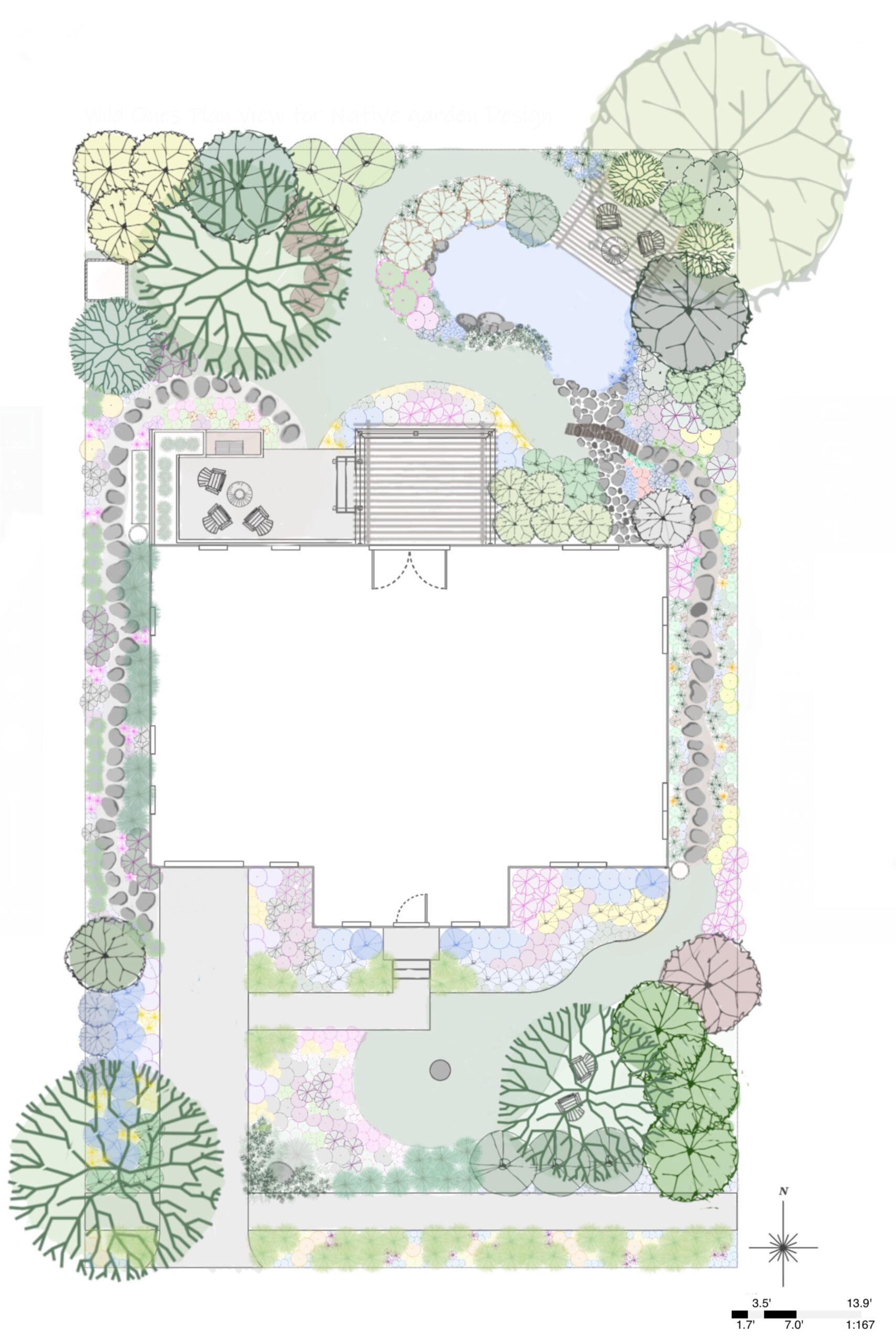
Printing note: This design was created to be 8.5″ x 14″ and the design pdf will print best on legal size paper.
Wild Ones Meet the Designers Webinar
Combating the Biodiversity Crisis with Native Plants
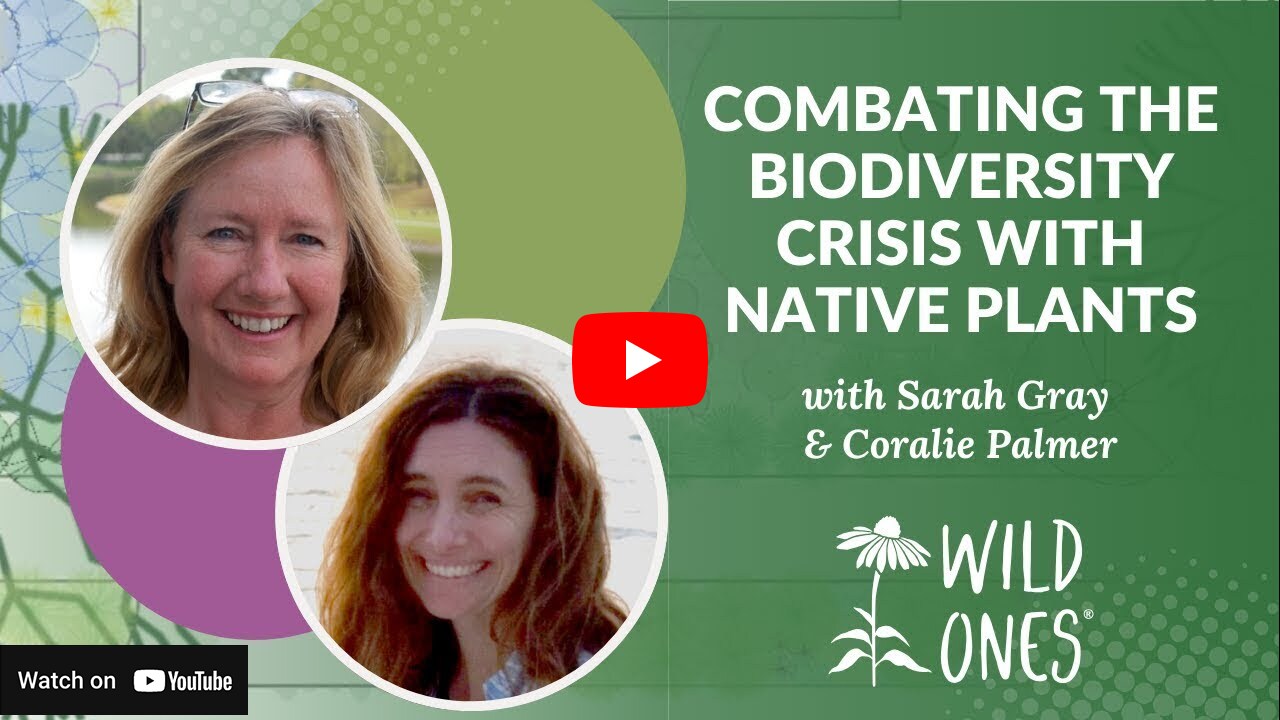
Overview
The designers envisioned this site as being typical of many sub-divisions in Indiana, built on a partially cleared wooded lot and corn fields. The soil is therefore a mixture of heavy poorly drained clay to the north of the property and loamy soil to the front of the property and surrounding the house. It is anticipated that with the increase in temperatures due to climate change the winter and spring months will be wetter in Indiana, with the likelihood of increased flooding, and that summer and fall will be hotter and dryer. An assessment of how water, wind and sun affect every aspect of the site, as well as existing features and how the site will be used by the homeowners are important considerations for us in developing a landscape plan. We have selected plants that are both appropriate to the conditions on the site and may be resilient to future challenges caused by climate change. All of the species used in the design are native to Indiana. The design is intended to be both ecologically valuable and a plant-lover’s garden, with a high abundance of plants and high diversity at species, genus and family taxon levels, providing both habitat and enjoyment throughout the year.
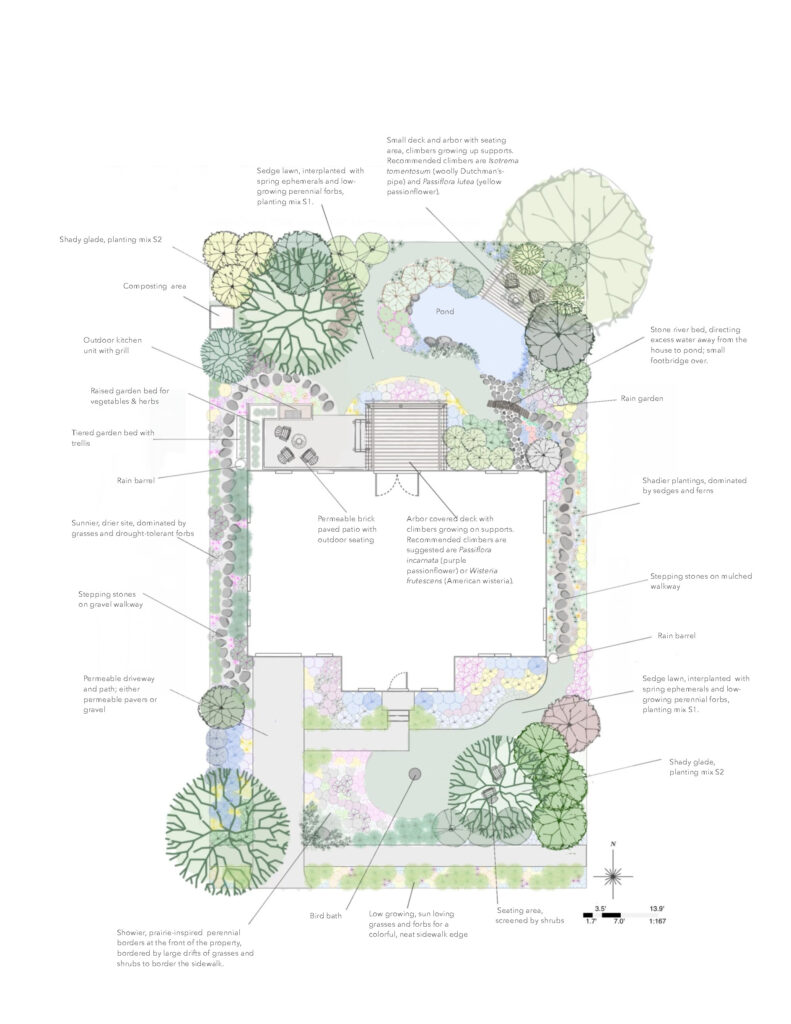
Features
Note: Download the full design for more details, plant lists and keys.
The lawn areas that may, in a more traditional garden, be turf grass are instead densely planted with sedges to reduce mowing requirements and associated energy use and to provide increased habitat. Depending on the look required, the planting could be dominated by one sedge species – Carex jamesii may be ideal – or a matrix of several sedge species. Spring ephemerals and low-growing perennial forbs interplanted with the sedges provide interest and floral resources. In the sedge lawn at the front of the property, a birdbath acts as a focal point, providing water for wildlife and providing opportunities for wildlife watching from the windows and from the shaded seating area.
Sedge Lawn Planting Mix:
- Common blue violet (Viola sororia): Wonderful groundcover and early nectar source for bees, and host plant for a number of Fritillary butterfly species.
- Cut-leaf toothwort (Cardamine concatenata): Provides important floral resources as one of the first plants to bloom in spring.
- Eastern star sedge (Carex radiata): Native to mesic lowlands; small star-like flower clusters in late spring.
- James’ sedge (Carex jamesii): Small, adaptable perennial sedge; a host plant for the Eyed Brown butterfly and seeds are an important food source for many bird species.
- Pennsylvania sedge (Carex pensylvanica): Fine textured, delicate sedge for a fresh green look.
- Plains oval sedge (Carex brevior): Short and mounding, adaptable, thrives in various conditions; drought tolerant. Little prickly seed heads turn golden brown in the fall.
- Rosy sedge/Curly wood sedge (Carex rosea): Small bright green tufts with delicate star-like clusters.
- Shooting star (Dodecatheon meadia): Primarily pollinated by bumble bees through ‘buzz pollination’; a beautiful true spring ephemeral.
- Spring beauty (Claytonia virginica): One of the first blooms in early spring, an excellent early season resource for bees.
- White tinged sedge (Carex albicans): Delicate mounding structure; excellent for dry shade.
- Wild stonecrop (Sedum ternatum): Excellent year-round groundcover.
The pond is a major feature of this design and is a haven for wildlife, particularly in hot dry spells, and is overlooked by the small deck with an arbor offering a pleasant shaded place to sit. This part of the site remains waterlogged longer after periods of heavy rain so installing a pond is a solution to collecting excess water from the garden and runoff from the house, which drains from a downspout into the dry riverbed leading to the rain garden and pond. The east side of the pond is constructed to be shallower for water plants and to provide habitat for aquatic and semi-aquatic life, and hopefully will help support local amphibian populations. The soil removed from the pond is used to build up a gently sloping bank on the west side of the pond, creating a border edged in shrubs. Large boulders placed around the pond at intervals provide extra places to sit and add interest.
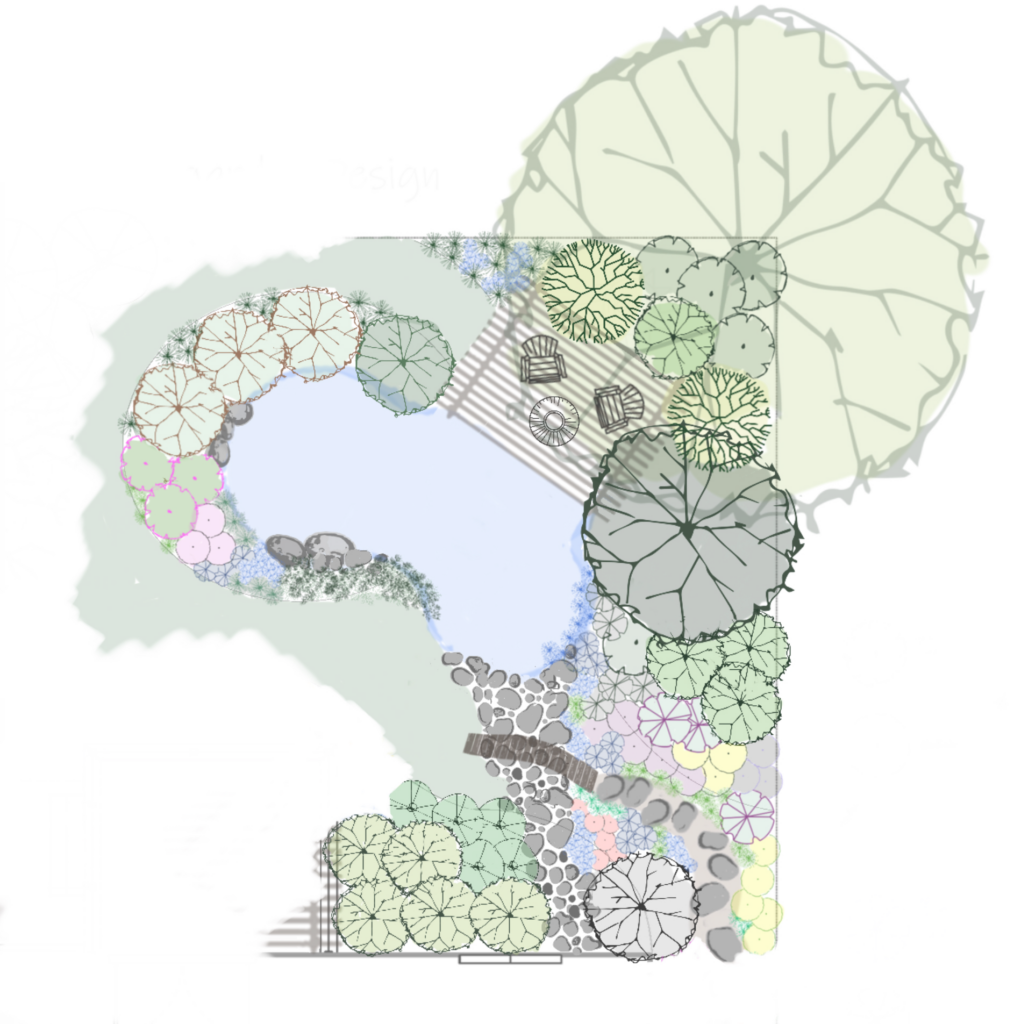
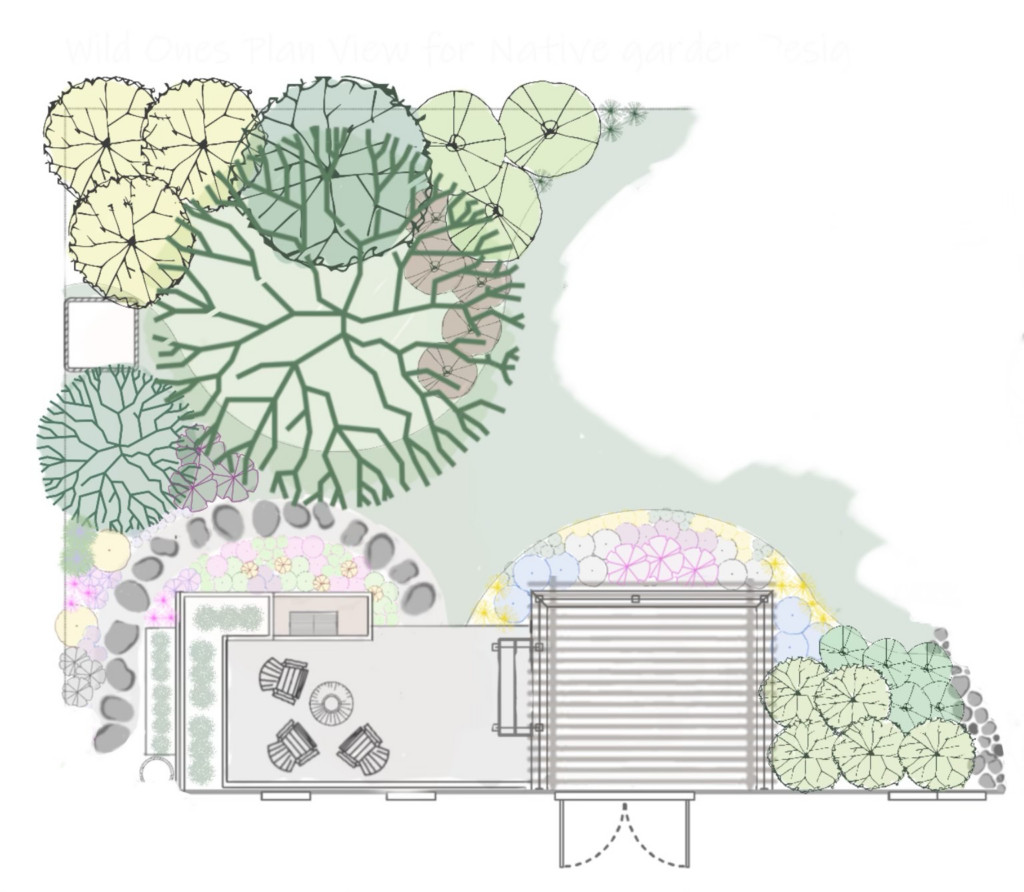
The permeable brick paved area off the deck by the house offers a further seating area, possibly adding a small fire pit, and a built in BBQ/grill. Raised beds on either side of a trellis are for growing vegetables and an arbor over the deck affords light shade and the opportunity for some unusual native climbing plants.
Rain barrels, by the vegetable raised beds and on the southeast corner of the front of the house, capture and store water to be used to water plants and any excess is directed away from the house into shrub and flower beds.
There is a hidden area for composting leaves and other organic matter to use as a soil conditioner and mulch around plants for moisture retention and weed suppression.
Paths
A gravel path with staggered 24” stepping stones meandering down the west side of the house provides a place for sunloving grasses, herbs and forbs that will thrive in dry conditions: rattlesnake master (Eryngium yuccifolium), false aloe (Manfreda virginica), northern blazing star (Liatris scariosa var. nieuwlandii), purple love grass (Eragrostis spectabilis), little bluestem (Schizachyrium scoparium), prairie onion (Allium stellatum), hoary vervain (Verbena stricta).
Along the east side of the house, the mulch path with stepping stones provides an area for shade loving species, dominated by ferns and sedges: sweet Joe Pye weed (Eutrochium purpureum), sensitive fern (Onoclea sensibilis), sweet coneflower (Rudbeckia subtomentosa), yellow pimpernel (Taenidia integerrima), maidenhair fern (Adiantum pedatum), interrupted fern (Osmunda claytoniana), American alumroot (Heuchera americana), long-beak sedge (Carex sprengelii), woodland phlox (Phlox divaricata), dwarf crested iris (Iris cristata), early meadowrue (Thalictrum dioicum).
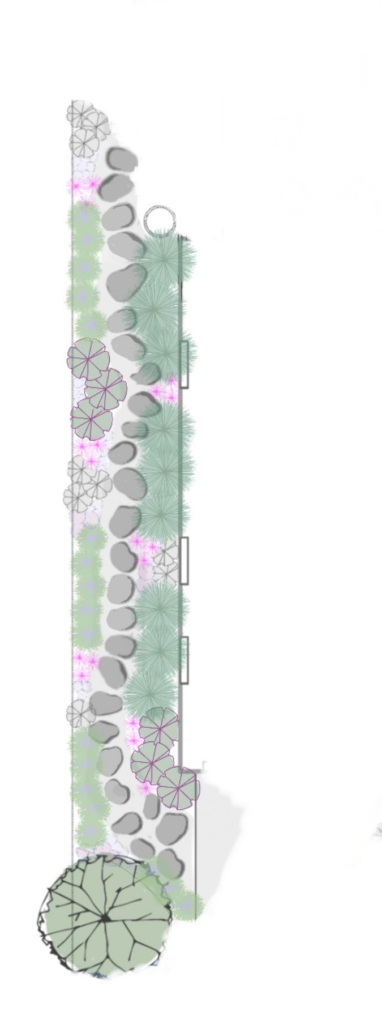

In both the northwest and southeast corners of the property, areas under the trees are planted as small shady
woodland glades. These areas are envisioned as planted with a base sedge matrix, interplanted with ferns and a high variety of spring ephemerals, and with several species of shade-loving aster and goldenrod species to provide a long season of resources for wildlife.
Shady glade planting mix:
- Blue stemmed goldenrod (Solidago caesia): A top pick for native bees and lepidoptera. Delicate yellow arches of flowers; part to full shade, most soil conditions. Less aggressive and smaller stature than many other goldenrods and well suited to shade garden.
- Bloodroot (Sanguinaria canadensis): A top pick for supporting native bees. White flowers very early in the spring. Partial to full shade; medium-wet to medium-dry soil. Seed dispersal by ants.
- Common blue violet (Viola sororia): Wonderful groundcover and early nectar source for bees, and host plant for a number of Fritillary butterfly species.
- Common wood sedge (Carex blanda): Compact mounded sedge found in upland woodland.
- Cut-leaf toothwort (Cardamine concatenata): Provides important floral resources as one of the first plants to bloom in spring.
- Drooping trillium (Trillium flexipes): Beautiful woodland species. Delicate, drooping white flower.
- Early meadowrue (Thalictrum dioicum): Distinctive lacy blue-green foliage and delicate flower tassels in spring and early summer. Male and female flowers occur on separate plants. Male flowers are greenish-white with yellowish stamens. Female flowers are greenish-white with purplish pistils.
- Great merrybells (Uvularia grandiflora): Yellow bellflowers; food source for Bumblebees, Mason bees, Halictid bees, and Andrenid bees.
- Heart-leaved aster (Symphyotrichum cordifolium): A top pick for native wasps; important autumn resource for bees and other pollinators. Numerous pale blue flowers in the autumn; partial to full shade, medium soil.
- Jacob’s Ladder (Polemonium reptans): Wonderful in woodlands and easy to grow in any medium soil in part shade and shade; found naturally in wetter areas. Blue flowers in spring provide important early season resources.
- Lyre-leaved Sage (Salvia lyrata): Blue tubular flowers. Robust and self-seeding; loves damper soil. Wonderful early bloom for bees.
- Lowland Fragile Fern (Cystopteris protrusa): Delicate, airy, deciduous fern.
- Marginal wood fern (Dryopteris marginalis): Lovely adaptable medium size fern whose leathery leaves stay green through the winter, providing year-round interest. Drought tolerant and hardy.
- Mayapple (Podophyllum peltatum): A woodland native; large, palmate leaves unfurl in spring and shelter a single, fragrant white flower located in the ‘Y’ of the stem. The flowers are beneficial for a variety of early season pollinators.
- Rosy sedge / Curly wood sedge (Carex rosea): Small bright green tufts with delicate star-like clusters.
- Spring beauty (Claytonia virginica): One of the first blooms in early spring, an excellent early season resource for bees.
- Toadshade (Trillium sessile): Beautiful woodland species; dark green mottled leaves and purple/maroon flowers.
- Virginia Strawberry (Fragaria virginiana): One of the most important host plants for Lepidoptera, plus delicious berries for people and wildlife! Will happily grow and spread in a great variety of soil and light conditions.
- White tinged sedge (Carex albicans): Delicate mounding structure; excellent for dry shade.
- White woodland aster (Aster divaricatus): One of the first asters to bloom, with numerous white blooms and deep green foliage. Important floral resources for late season pollinators and seeds for songbirds.
- Wild columbine (Aquilegia canadensis): Red/yellow intricate flowers. Blooms just as hummingbirds are arriving in spring.
- Wild geranium (Geranium maculatum): Nectar for bumble bees and solitary bees; pollen for mason bees and specialist mining bees (Andrena distans). Full sun to full shade; medium soil, very easy to grow, wonderful with ferns in woodland setting.
- Wild ginger (Asarum canadense): Low growing ground cover with lovely large, heart-shaped leaves. A dark red flower appears under the leaves in early spring.
- Wild leek (Allium tricoccum): Wide green basal foliage followed by white umbelliferous blooms on this edible spring ephemeral.
- Yellow jewelweed (Impatiens pallida): Yellow jewel-like flower; annual though requires double dormancy to germinate.
- Yellow trout lily (Erythronium americanum): A beautiful colony forming little perennial with distinctive mottled green and brown leaves.
- Zigzag Goldenrod (Solidago flexicaulis): Lovely late season color and floral resources for insects.
- Woodland phlox (Phlox divaricata): Carpets of pale blue flowers in the spring; easy to grow in any medium soil, part to full shade. Beautiful with wild ginger and wild geranium; a woodland garden must-have.
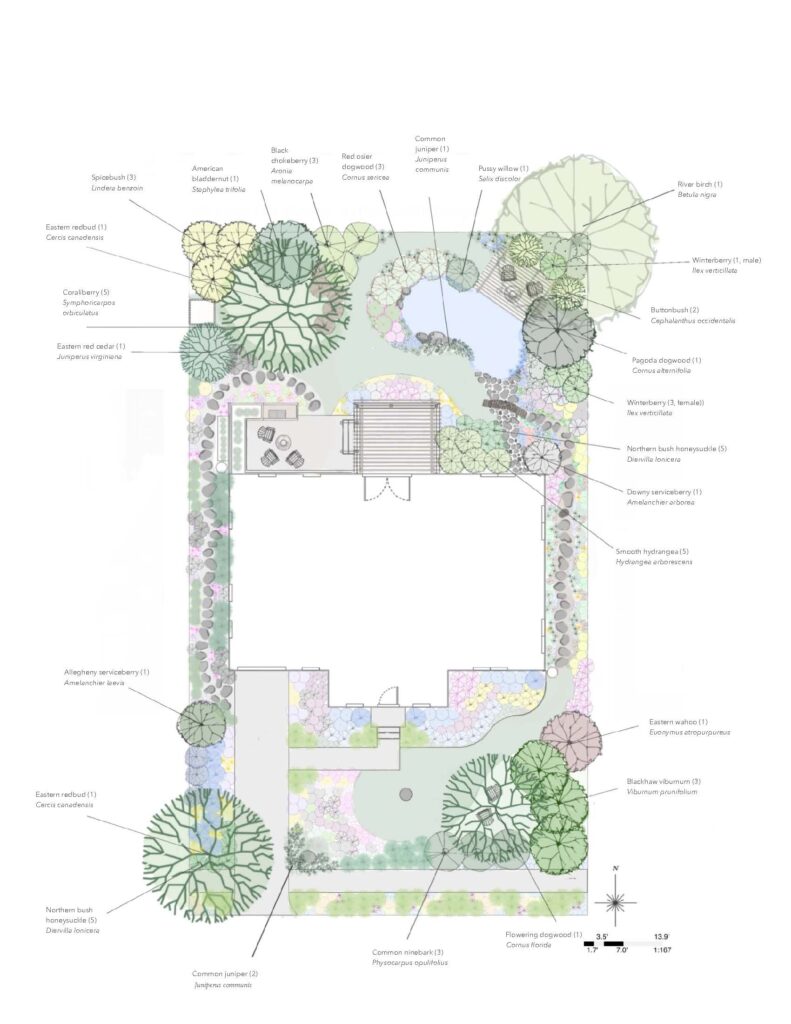
Phasing
1. As water drainage is a problem on this site the priority is to build the pond and stone river bed, directing excess water away from the house. The riverbed should be constructed as a swale lined with biodegradable weed cloth, river rock and larger stepping stones to provide access through this area. Build up the sides with dirt, plant and mulch to reduce erosion.
2. Other hard landscaping elements should be installed at this time such as placement of large rocks, permeable paving off the deck and construction of the BBQ and raised beds. For access to the back garden install the paths, with stepping stones, down both sides of the house and to the paved area off the deck. Mulch the path with gravel on the west side and bark chipping on the east side. Planting the trees and large shrubs as well as installing the areas of sedge lawn, and the water loving plants for the rain garden should be included in this phase.
3. Construct the deck and arbor overlooking the pond. Continue to plant the rest of the shrubs and ground cover. Dense planting will reduce the need for mulching and help with weed suppression. If lawn already exists onsite, try to reduce the amount of lawn by adding borders in stages as time and budget allow.
4. Install a compost area and rain barrels to store water for use on the raised vegetable beds and other areas of the garden. Extend an overflow rain spout from the front east corner of the house into the border to provide extra water for the shrubs and tree on the southeast corner.
Plant Communities
The selection of native plant communities is designed to reduce the need for watering, maintenance and pollution from mowing, improve water drainage and provide a variety of habitats for wildlife.
Dry Prairie: The front of the property with its southern and westerly exposure experiences hotter and dryer conditions, particularly adjacent to the house, drive and paths. Here the soil is a faster draining loam so drought tolerant native plants were chosen which thrive in these conditions; species chosen are predominantly medium and short prairie plants and grasses that would be allowed within most subdivision HOA ordinances. This includes the strip between the road and sidewalk, which decreases the need for watering and maintenance as well as provides a more attractive buffer between the street and the property.
Biohedge and tree selection: The species of trees were selected to be appropriate to the site conditions and to reach an overall size that will provide some shade but not become too large over time and potentially cause problems later on. The shrubs have been selected to provide several seasons of interest as well as high wildlife value, including shrubs with attractive bark for winter interest and several varieties with berries and attractive fall foliage. The evergreens also provide nesting sites and shelter for birds in winter and screen the compost area from the house.
Wet/Mesic: The river birch (Betula nigra) and shrubs that prefer moist/wet conditions such as buttonbush (Cephalanthus occidentalis), deciduous hollies and spicebush (Lindera benzoin) are planted on the north side where they can cope with the heavier clay soil which retains water. These are underplanted with moisture and shade-loving sedges ferns and ephemerals which will help to decrease weed competition and aid in water absorption. A variety of moisture-loving forbs provide color, food and cover for insects and birds in the rain garden and surrounding the pond area.
Ground cover: In the form of ephemerals, sedges, shade tolerant perennials and low growing shrubs planted under trees reduce maintenance in these areas and help keep the soil cool and retain moisture.
PLANT LIST
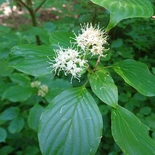
Alternate Leave Dogwood(Cornus alternifolia)
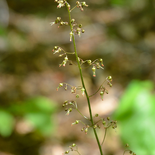
American Alumroot(Heuchera americana)
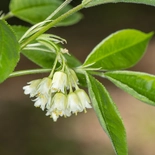
American Bladdernut(Staphylea trifolia)
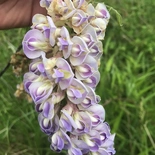
American Wisteria(Wisteria frutescens)
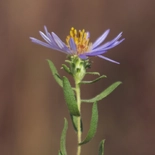
Aromatic Aster(Symphyotrichum oblongifolium)
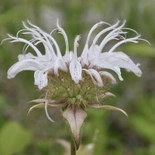
Beebalm(Monarda bradburiana)
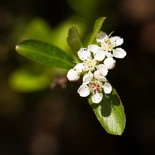
Black Chokeberry(Aronia melanocarpa)
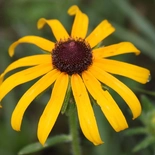
Black Eyed Susan(Rudbeckia hirta)
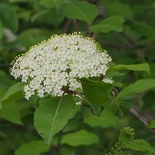
Blackhaw Viburnum(Viburnum prunifolium)
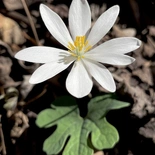
Bloodroot(Sanguinaria canadensis)
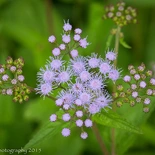
Blue Mistflower(Conoclinium coelestinum)
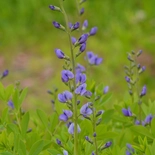
Blue Wild Indigo(Baptisia australis)
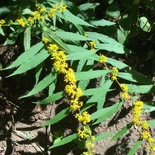
Blue-Stemmed Goldenrod(Solidago caesia)
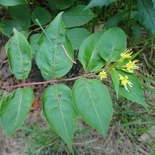
Bush Honeysuckle(Diervilla lonicera)
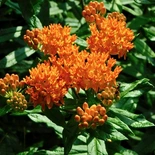
Butterfly Weed(Asclepias tuberosa)
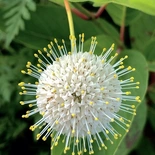
Buttonbush(Cephalanthus occidentalis)
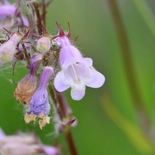
Calico Beardtongue(Penstemon calycosus)
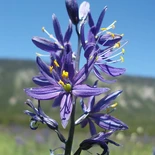
Camas(Camassia quamash)
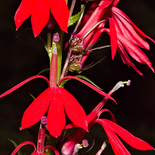
Cardinal Flower(Lobelia cardinalis)
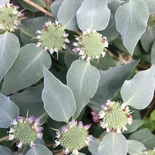
Clustered Mountain Mint(Pycnanthemum muticum)
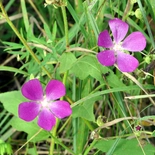
Clustered Poppy Mallow(Callirhoe triangulata)
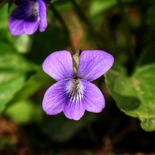
Common Blue Violet(Viola sororia)
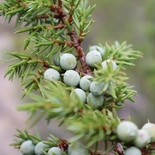
Common Juniper(Juniperus communis)
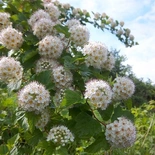
Common Ninebark(Physocarpus opulifolius)
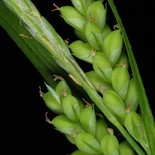
Common Wood Sedge(Carex blanda)
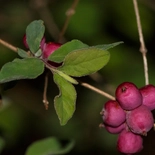
Coralberry(Symphoricarpos orbiculatus)
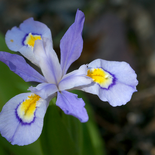
Crested Iris(Iris cristata)
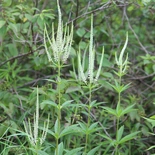
Culver's Root(Veronicastrum virginicum)
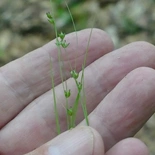
Curly Wood Sedge(Carex rosea)
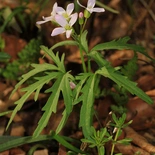
Cutleaf Toothwort(Cardamine concatenata)
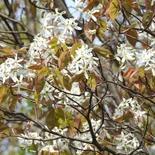
Downy Serviceberry(Amelanchier arborea)
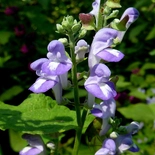
Downy Skullcap(Scutellaria incana)
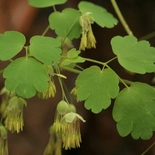
Early Meadow Rue(Thalictrum dioicum)
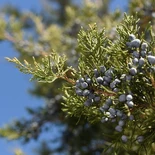
Eastern Red Cedar(Juniperus virginiana)
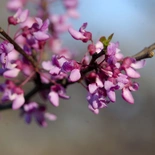
Eastern Redbud(Cercis canadensis)
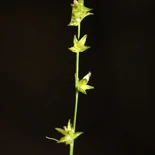
Eastern Star Sedge(Carex radiata)
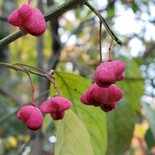
Eastern Wahoo(Euonymus atropurpureus)
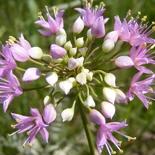
Fall Glade Onion(Allium stellatum)
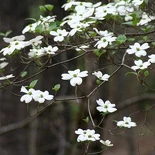
Flowering Dogwood(Cornus florida)
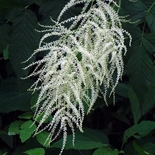
Goat's Beard(Aruncus dioicus)
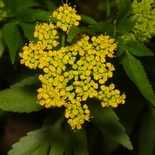
Golden Alexanders(Zizia aurea)
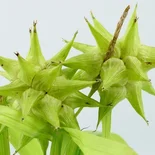
Gray's Sedge(Carex grayi)
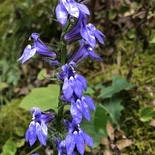
Great Blue Lobelia(Lobelia siphilitica)
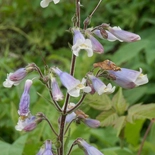
Hairy Beardtongue(Penstemon hirsutus)
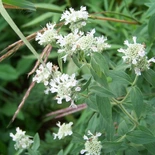
Hairy Mountain Mint(Pycnanthemum verticillatum)
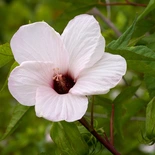
Halberdleaf Rosemallow(Hibiscus laevis)
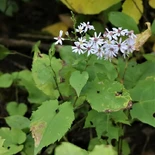
Heart-leaved Aster(Symphyotrichum cordifolium)
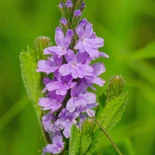
Hoary Vervain(Verbena stricta)
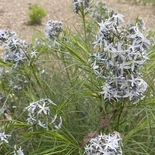
Hubricht's Bluestar(Amsonia hubrichtii)
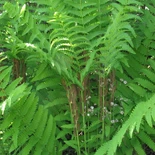
Interrupted Fern(Osmunda claytoniana)
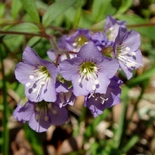
Jacob's Ladder(Polemonium reptans)
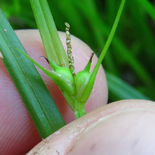
James Sedge(Carex jamesii)
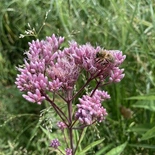
Joe Pye Weed(Eutrochium maculatum)
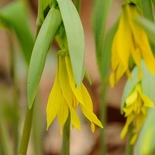
Large-flowering Bellwort(Uvularia grandiflora)
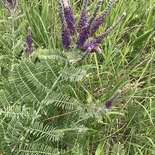
Leadplant(Amorpha canescens)
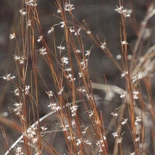
Little Bluestem Grass(Schizachyrium scoparium)
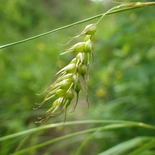
Long Beaked Sedge(Carex sprengelii)
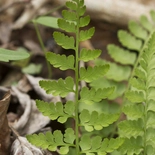
Lowland Fragile Fern(Cystopteris protrusa)
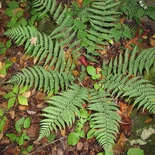
Marginal Wood Fern(Dryopteris marginalis)
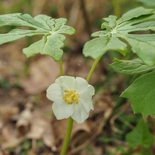
Mayapple(Podophyllum peltatum)
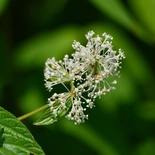
New Jersey Tea(Ceanothus americanus)
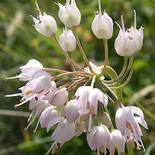
Nodding Onion(Allium cernuum)
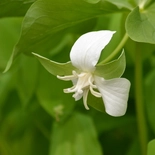
Nodding Wakerobin(Trillium flexipes)
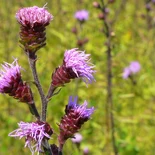
Northern Blazing Star(Liatris scariosa)
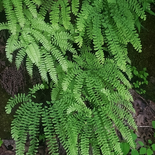
Northern Maidenhair Fern(Adiantum pedatum)
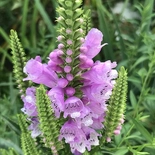
Obedient Plant(Physostegia virginiana)
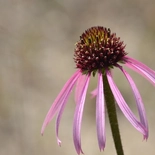
Pale Purple Coneflower(Echinacea pallida)
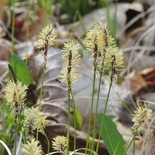
Pennsylvania Sedge(Carex pensylvanica)
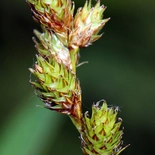
Plains Oval Sedge(Carex brevior)
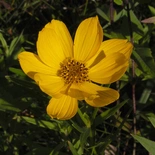
Prairie Coreopsis(Coreopsis palmata)
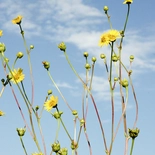
Prairie Dock(Silphium terebinthinaceum)
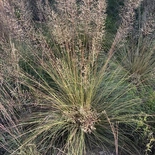
Prairie Dropseed(Sporobolus heterolepis)
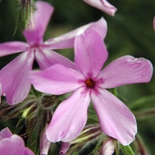
Prairie Phlox(Phlox pilosa)
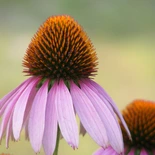
Purple Coneflower(Echinacea purpurea)
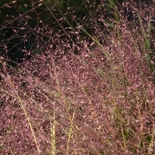
Purple Lovegrass(Eragrostis spectabilis)
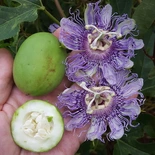
Purple Passionflower(Passiflora incarnata)
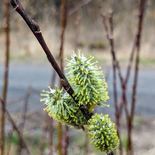
Pussy Willow(Salix discolor)
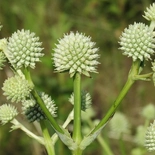
Rattlesnake Master(Eryngium yuccifolium)
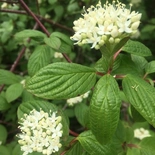
Red Osier Dogwood(Cornus sericea)
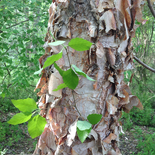
River Birch(Betula nigra)
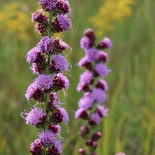
Rough Blazing Star(Liatris aspera)
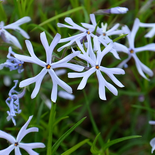
Sand Phlox(Phlox bifida)
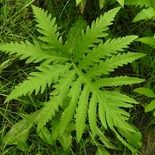
Sensitvie Fern(Onoclea sensibilis)
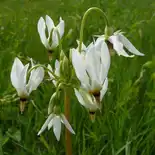
Shooting Star(Dodecatheon meadia)
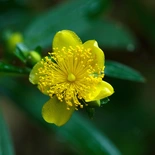
Shrubby St. John's Wort(Hypericum prolificum)
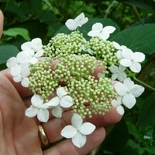
Smooth Hydrangea(Hydrangea arborescens)
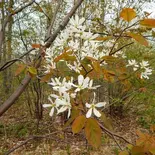
Smooth Serviceberry(Amelanchier laevis)
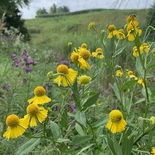
Sneezeweed(Helenium autumnale)
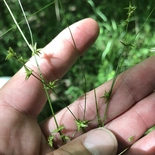
Social Sedge(Carex socialis)
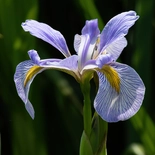
Southern Blue Flag Iris(Iris virginica)
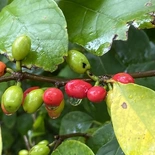
Spicebush(Lindera benzoin)
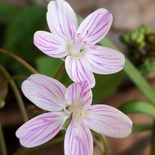
Spring Beauty(Claytonia virginica)
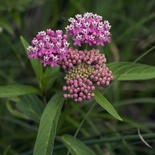
Swamp Milkweed(Asclepias incarnata)
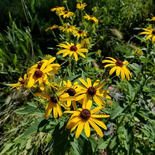
Sweet Black-eyed Susan(Rudbeckia subtomentosa)
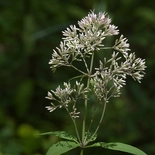
Sweet Joe Pye Weed(Eutrochium purpureum)
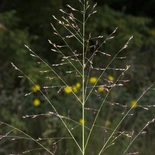
Switchgrass(Panicum virgatum)
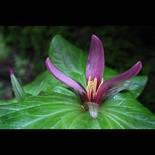
Toadshade(Trillium sessile)
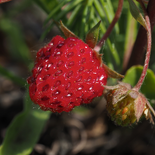
Virginia Strawberry(Fragaria virginiana)
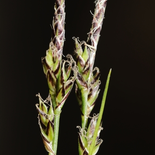
White Tinge Sedge(Carex albicans)
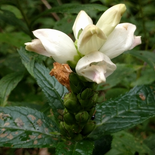
White Turtlehead(Chelone glabra)
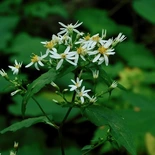
White Wood Aster(Eurybia divaricata)
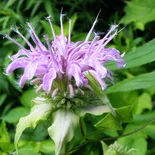
Wild Bergamot(Monarda fistulosa)
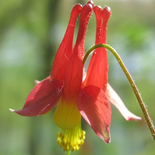
Wild Columbine(Aquilegia canadensis)
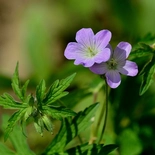
Wild Geranium(Geranium maculatum)
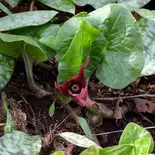
Wild Ginger(Asarum canadense)
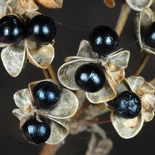
Wild Leek(Allium tricoccum)
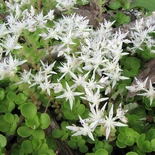
Wild Stonecrop(Sedum ternatum)
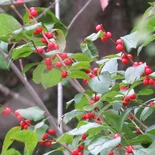
Winterberry(Ilex verticillata)
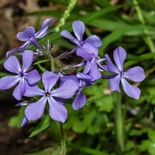
Woodland Phlox(Phlox divaricata)
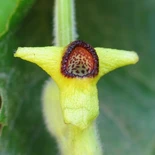
Wooly Dutchman's Pipe(Aristolochia tomentosa)
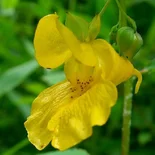
Yellow Jewelweed(Impatiens pallida)
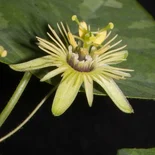
Yellow Passionflower(Passiflora lutea)
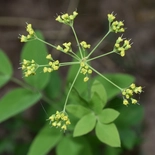
Yellow Pimpernel(Taenidia integerrima)
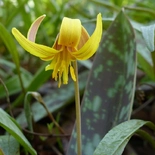
Yellow Trout Lily(Erythronium americanum)
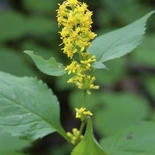
Zigzag Goldenrod(Solidago flexicaulis)
ABOUT THE DESIGNERS
As part of the Indiana Native Plant Society Landscaping team Coralie and Sarah have collaborated on diverse landscaping projects across Indiana, designing native planting schemes for The Eiteljorg Museum, The Indianapolis Zoo, The Humane Society and Holcomb Gardens.

Born and raised in New Zealand, Sarah Gray cultivated a deep appreciation for nature from her earliest years. Her academic background in Environmental Biology and Entomology, and her passion for the natural world laid the foundation for a career in landscape design and a business creating gardens in England, France, and the United states. Since moving to Indiana 18 years ago she has become a vocal advocate for native plant landscaping, recognizing its ecological benefits and aesthetic potential. Promoting native plants extends beyond her design practice as she actively participates in the Indiana Native Plant Society (INPS), particularly within the Landscaping with Natives team. Through this involvement, she contributes to educational initiatives, giving talks on “replacing invasive plant species with native species” and “how homeowners can enhance their landscape for both human enjoyment and wildlife habitat conservation.”

Originally from London, Coralie Palmer has lived in India and Australia, and for over a decade has been thankful to call Indiana home. Coralie has Bachelor’s and Master’s Degrees in Biological Sciences from Oxford University with a focus on botany, zoology and ecology, and a background in conservation, environmental education and landscape design. Working for the Environmental Justice Foundation in London she focused on wetland conservation, publishing research from Bangladesh and Vietnam. Since moving to Indiana, studying the native plants and the ecology of the Midwest has become a passion. Coralie is the founder of Sugarbush Ecological Landscapes, working to connect landscaping and ecology to support and restore healthy, biodiverse ecosystems, and to increase access to functional healthy ecosystems for all people. Coralie is President of the Indiana Native Plant Society (INPS) and serves on the Board of Directors for the Indiana Wildlife Federation (IWF). She loves spending time traveling with her husband and three boys, visiting National Parks in the U.S. and is constantly inspired by the beautiful gardens close to her family home by the sea in Cornwall, England.

About Wild Ones
Wild Ones (a 501(c)(3) nonprofit organization) is a knowledgeable, hands-on, and supportive community focused on native plants and the ecosystem that depends on them. We provide resources and online learning opportunities with respected experts like Wild Ones Honorary Directors Doug Tallamy, Neil Diboll, and Larry Weaner, publishing an award-winning journal, and awarding Lorrie Otto Seeds for Education Program grants to engage youth in caring for native gardens.
Wild Ones depends on membership dues, donations and gifts from individuals like you to carry out our mission of connecting people and native plants for a healthy planet.
Looking for more native gardening inspiration? Take a peek at what our members are growing!
